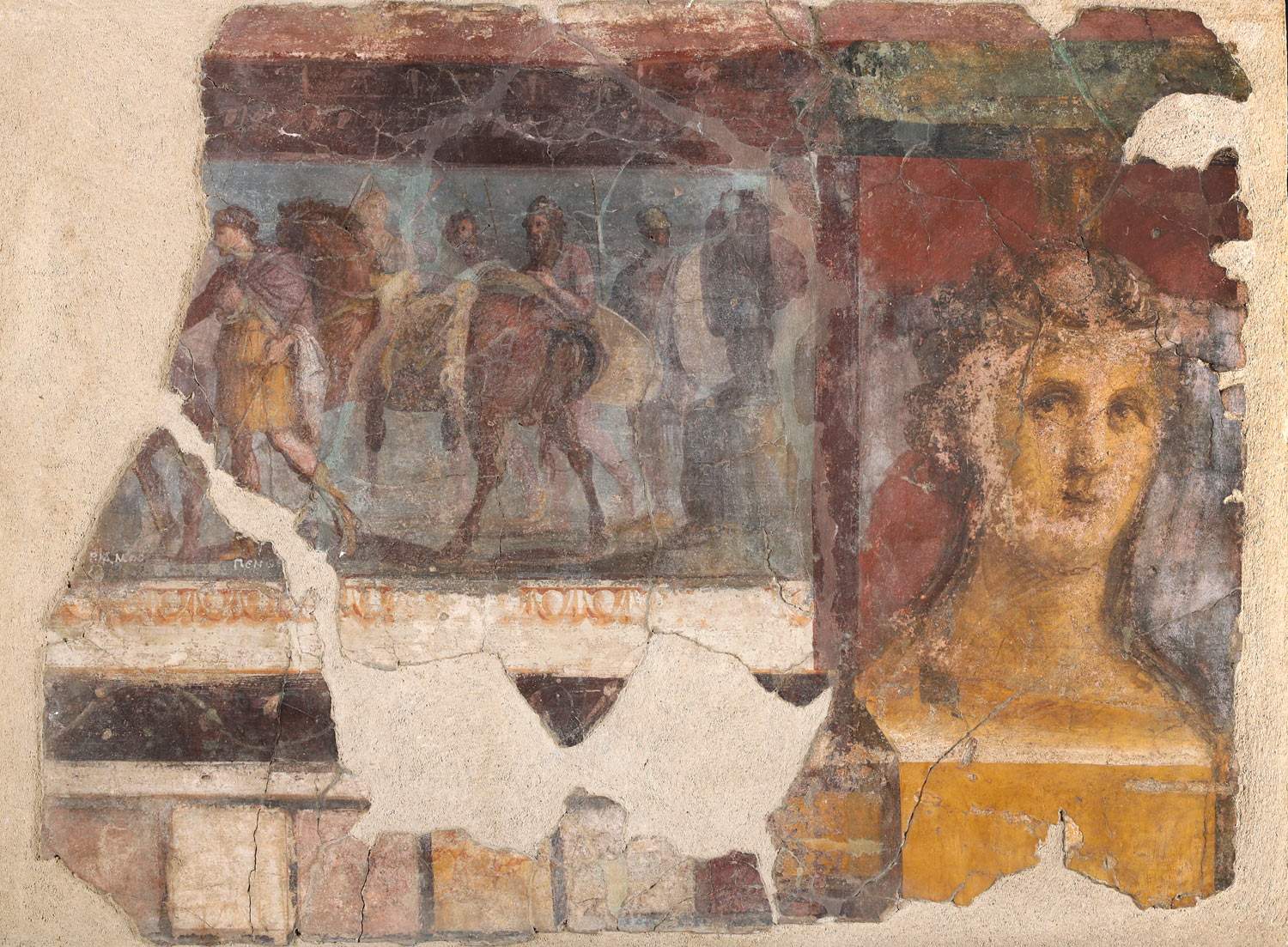Turin, a major exhibition on Pompeii at Palazzo Madama with more than 120 works
From April 8 to August 29, 2022, Pompeii moves to Turin: in fact, the exhibition Invitation to Pompeii, curated by the Archaeological Park of Pompeii and Palazzo Madama, is being held at the Museo Civico di Palazzo Madama. The exhibition aims to be an “invitation” to enter the houses of Pompeii, to discover what the atmospheres were, how they were furnished, what objects were used daily by its inhabitants, how they were decorated and embellished, through a journey into the Pompeian world.
The exhibition tour, set up in the Senate Hall, winds through the most representative rooms of the most luxurious houses in first-century AD Pompeii. The Roman domus, for the first time in Turin, opens its doors wide to visitors, welcoming them into domestic intimacy and showing them the normality of daily life on the slopes of Vesuvius, whose eruption in 79 AD extinguished the lives of its inhabitants at a stroke. The Pompeii of today is but the skeleton of the ancient city, drained of all life by the natural calamity and emptied of those objects that would allow one to imagine it as it was.
The exhibition begins with a late 19th-century model of the House of the Tragic Poet, one of those that most stimulated the imagination of Grand Tour travelers and artists, so much so that it was the setting for many scenes in Edward Bulwer-Lytton’s novel The Last Days of Pompeii, which inspired Federico Maldarelli’s work Ione and Nidia from the Museum of Antiquities-The Royal Museums of Turin, which closes the tour. In Turin, the public can see a selection of more than 120 works, including furniture, statues, jewelry, bronzes, glassware and decorative apparatus, which is presented to the visitor in an itinerary through domestic spaces (the atrium, triclinium, peristyle with garden, bedrooms), ending with casts of some victims.
“Each house tells the personal and intimate story of a family, of its inhabitants, but it is also a microcosm of a society and an era, with their habits expressed through objects, furnishings and architecture,” says Gabriel Zuchtriegel, director of Pompeii Archaeological Park. “The Roman domus, in particular, adds to the narrative the extraordinariness and beauty of paintings and mosaics to admire. And exhibitions allow us to reach distant audiences and allow, not only those visiting Pompeii, to enjoy them. When they find a prestigious setting like Turin’s Palazzo Madama, the experience of knowledge and pleasure is complete.”
“Nearly two millennia ago, news of the eruption of Vesuvius reached Augusta Taurinorum,” points out Giovanni Carlo Federico Villa, director of Palazzo Madama. “And Pliny the Younger’s letters to Tacitus were perhaps discussed in the Porta Decumana of a Palazzo Madama, which retains so much memory of the formidable artistic season rediscovered in the Enlightenment era with the excavation of Pompeii. We are deeply grateful to the Archaeological Park and the Ministry of Culture for now allowing us to present works of rare significance and importance in such an evocative context. Every visitor, upon leaving the exhibition, will retrace that Roman tower where the events of Pompeii echoed in the first centuries of our history.”
The exhibition is part of the major exhibition initiatives promoted by the Fondazione Torino Musei. The catalog is published by Silvana Editoriale.
Image: Female herm and small painting with Iliac scene (1st cent. AD; fresco; Pompeii, Cryptoporticus House)
 |
| Turin, a major exhibition on Pompeii at Palazzo Madama with more than 120 works |
Warning: the translation into English of the original Italian article was created using automatic tools. We undertake to review all articles, but we do not guarantee the total absence of inaccuracies in the translation due to the program. You can find the original by clicking on the ITA button. If you find any mistake,please contact us.





























